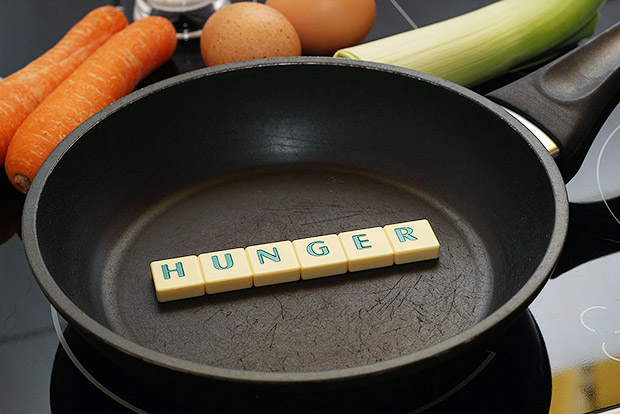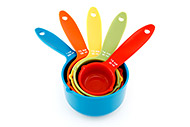
Understanding what causes hunger, how to stay full longer, and how to reduce cravings are important steps for weight loss. It allows you to make the necessary changes to control hunger before it takes control of you.
Eat a balanced meal.
A balanced meal offsets changes in the body that can trigger hunger. If you sit down to a meal full of simple sugars and lacking protein or fiber, you will likely be hungry again soon after eating. Refined carbohydrates spike blood sugar, which is then followed by a crash that will have your stomach grumbling. Protein helps to stabilize your blood sugar, reducing this spike and crash reaction. Research shows that increasing fiber intake also increases fullness. You will feel full longer by balancing your meal with lean protein (e.g., poultry or beans) and complex carbohydrates and fiber (e.g., whole grains, fruits, and vegetables).
Fill up on fewer calories.
If the meal ends and you still feel like you haven’t had enough to eat, look closely at the foods you ate. Eating nutrient-dense foods that provide fewer calories allows you to eat more while still reaching your weight loss goals. Fruits and vegetables are loaded with fiber, vitamins, and minerals, and most have few calories. Add a salad to your meal, or try fruit for dessert. Filling up on these foods will keep you feeling satisfied.
Don't drink your calories.
Sodas, alcohol, and juices supply the body with calories, but they won't keep you full.
Recognize true hunger.
Years of food restriction and fad diets can result in a numbing of hunger signals and an inability to recognize fullness. This causes you to confuse when your body needs fuel and when you are hungry out of stress or boredom. When hunger strikes, stop and assess the situation. How long has it been since you last ate? It’s normal to feel hungry about 3 to 5 hours after eating. Do you have a physical feeling of hunger, like a grumbling stomach? If so, chances are your body needs some healthy fuel. If not, you might be turning to food for reasons other than hunger. The more you stop to evaluate your food cravings, the better you will become at recognizing true hunger.
Identify your triggers.
We all have triggers that make us crave food even when we are not truly hungry. Identifying these triggers is essential to eliminate them and reduce eating when you are not truly hungry. Do you browse a food blog or restaurant website and find you are suddenly hungry? Do you sit in front of the television and want a snack? Seeing food can trigger cravings. When you recognize how these triggers affect you, you can learn to ignore the cravings and monitor your activities to avoid situations that make you hungry.



 8 Ways to Overcome a Lack of Support for Weight Loss
8 Ways to Overcome a Lack of Support for Weight Loss
 6 Tips for Controlling Portions
6 Tips for Controlling Portions
 Some People Dream of Success
Some People Dream of Success
 5 Breakfasts Under 300 Calories
5 Breakfasts Under 300 Calories
 4 Things to Know About Negative Calorie Diets
4 Things to Know About Negative Calorie Diets
 Healthy Ways to Motivate Your Friends
Healthy Ways to Motivate Your Friends
 15 Bites and Nibbles That Keep You From Losing Weight
15 Bites and Nibbles That Keep You From Losing Weight
 Recover from Weight Loss Setbacks
Recover from Weight Loss Setbacks

 Pinterest
Pinterest RSS Feed
RSS Feed